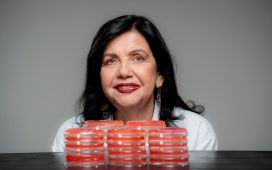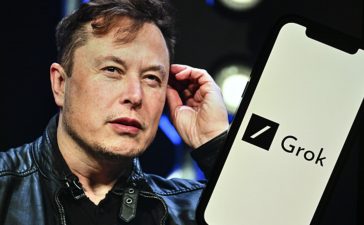
The spiral galaxy M51, as viewed by the James Webb Space Telescope
ESA/Webb, NASA & CSA, A. Adamo (Stockholm University)/FEAST JWST team
From extraordinary heat to stunning space imagery, New Scientist has brought you extensive coverage of the biggest developments, discoveries and events in science, technology, health and environment in 2023. Here is our recap of some of the best stories this year.
Environment

Wildfires raged on the Greek island of Rhodes in July 2023
ANGELOS TZORTZINIS/AFP via Getty Images
The number of heat records broken in 2023 is simply astounding. While we can’t say for sure until official figures are in next month, this year was almost certainly the hottest ever recorded. In a sign of how extraordinary temperatures have been, New Scientist was already reporting this possibility in mid-June, well before the northern hemisphere summer had got into gear.
A few weeks later saw a particularly surreal string of events. The average global air temperature recorded 2 metres above Earth’s surface – essentially, a way of taking the temperature of the entire planet – hit its highest ever figure on 3 July, but this record was immediately broken on 4 July, which was then matched on 5 July and broken again the next day. By the end of August, we had seen the hottest three-month period on record, and it was followed by the hottest September ever. In November, researchers declared the hottest 12 months on record.
Against this backdrop, negotiations at the COP28 climate summit in Dubai, United Arab Emirates, were a fraught affair. Whether the world would finally take action against fossil fuels was a key point of disagreement, and at one point looked set to scupper the summit. In the end, the world agreed to begin “transitioning away” from fossil fuels – which was the first time they have been mentioned in a COP text – but many questions remain about what that means in practice.
Health

The weight-loss drug Wegovy saw a surge in demand in 2023
Carsten Snejbjerg/Bloomberg via Getty Images
The demand for Wegovy, the weight-loss formulation of semaglutide, this year has been like almost no other drug in history. As well as being incredibly effective for weight loss, early trials this year have shown that it may cut the risk of heart attack or stroke and could also help treat addiction. Despite some moralising about a “quick fix” for obesity, along with shortages and difficulty in accessing the drug, it is clear a health revolution has begun.
The past year has also been the first since 2019 that covid-19 wasn’t at the forefront of everyone’s minds. With the World Health Organization announcing on 5 May that the viral illness was no longer a public health emergency, in some sense the coronavirus pandemic has come to an end – at least for some. Millions of people are still experiencing the lingering symptoms of long covid, a condition that remains poorly understood.
Artificial intelligence

Writers in London staged a rally in solidarity with striking US screenwriters, who demanded their jobs be protected from AI
Vuk Valcic / Alamy Stock Photo
By a rough count, New Scientist has published almost 150 stories about artificial intelligence this year. Tech firms were falling over each other to compete, from OpenAI claiming “human level performance” for its GPT-4 large language model to Google saying its Gemini model is even better. There were concerns about the rise of AI-driven misinformation, from an image of the Pope in a puffer jacket to the risk of a feedback loop of bias, along with attempts at detecting AI-generated text.
AI was also the subject of high-level discussions across politics and business. It became a huge sticking point in the Hollywood writers’ and actors’ strikes, while world leaders, researchers and businesspeople convened at Bletchley Park in the UK in November to sign a declaration on the risks of the new technology. Truly, this was the year AI went mainstream.
Space

The dense centre of the Milky Way, as seen by the James Webb Space Telescope
NASA, ESA, CSA, STScI, Samuel Crowe (UVA)
The biggest space mission of the year was also one of the least expensive, with India’s low-budget Chandrayaan-3 moon landing costing just £60 million. India’s success made it just the fourth nation to safely touch down on the moon, after the US, the Soviet Union and China. It also came just days after a Russian probe crash-landed on the lunar surface in an attempt to recapture that Soviet-era glory.
Further out in space, the James Webb Space Telescope continued to shine, providing fantastic images and advancing our understanding of the universe, from the fastest growing galaxy to the most distant black hole ever seen.
Topics:










